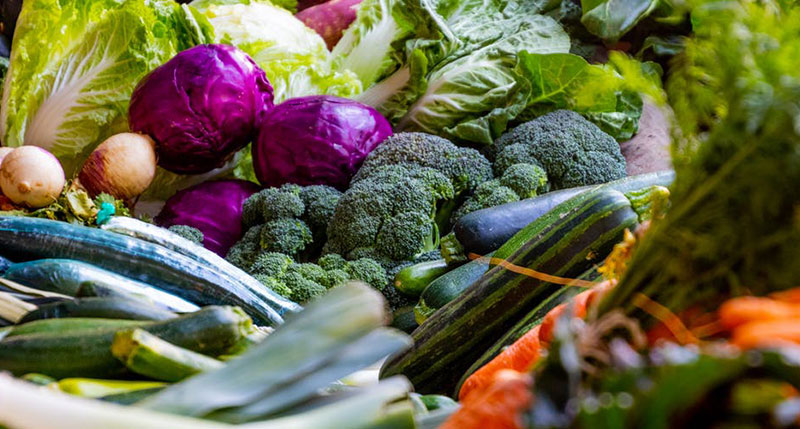Diabetes is a metabolic disorder that manifests in a chronic, progressive disease that can cause serious health concerns. As the 7th leading cause of death in the US, it plays a role in 250,000-plus deaths in our country each year.
About 95% of diabetes cases in the US are classified as Type 2 diabetes, and up to 50% of those cases could be prevented with a strong commitment to eating a healthy diet, maintaining a healthy body weight and exercising regularly.
It takes willpower and commitment, but reversing or preventing a disease that could cause you to go blind, have limbs amputated or suffer a heart attack or stroke is a smart strategy to improve quality of life.
And if you’re one of the 86 million Americans who are classified as pre-diabetic, adopting a healthy diet and lifestyle now can prevent your condition from progressing to full-blown diabetes.
Here’s what to eat—and what not to eat—to prevent or reverse diabetes.
Foods to Avoid to Prevent Diabetes
Since diabetes results from high levels of blood sugar, avoiding the foods and food groups known to have a particularly profound effect on blood sugar levels is a strong first step.
These include:
- Refined sugar, which causes a rapid spike in blood glucose, along with sugary beverages, including soda and fruit juices. If you must sweeten a drink, use stevia—a naturally derived sweetener with a lower impact on blood glucose.
- Grains, especially wheat and other grains that contain gluten. Your body breaks down these carbohydrates quickly, and they become sugar in your bloodstream. Gluten can also cause intestinal inflammation, which can affect hormones and lead to even higher blood sugar spikes.
- Conventional cow’s milk-based dairy products. Cow’s milk contains an element called A1 casein that can harm your body with a similar inflammatory response to eating gluten. If you eat dairy, buy only raw, organic products from sheep, goats or A2 cows.
- Alcohol leads to significantly increased blood sugar levels and can result in liver toxicity. People who drink heavily – defined as consuming 3 or more drinks in a day—have a 43% higher risk of developing diabetes.
- GMO foods, including soy, corn and canola, are linked to liver and kidney disease and may increase your risk for diabetes. Read your labels, and only purchase products labeled GMO-free or organic.
- Hydrogenated vegetable oils including soy, cottonseed and canola oils, which are linked to multiple health concerns, diabetes being one of them.
Foods You Should Consume to Prevent Diabetes
On the flipside of foods to avoid are the following foods and nutrients to add to your diet and consume regularly. All of these options contribute to lowering or regulating blood sugar and metabolism, which can have a positive impact on your overall blood sugar levels.
- High-fiber foods. The vast majority of Americans (up to 95% of us) don’t eat enough fiber each day. Fiber slows glucose absorption, therefore regulating blood sugar levels. Aim to consume 30 grams or more of fiber daily. Best choices: Brussels sprouts, broccoli, artichokes, peas, berries, avocados, nuts and seeds–especially flaxseeds and chia seeds.
- Chromium, a nutrient involved in the metabolism of carbohydrates and fats, can increase your body’s glucose tolerance as it balances out blood sugar levels. Broccoli is loaded with chromium, which is also found in green beans, grass-fed beef, raw cheese and brewer’s yeast.
- Magnesium plays a role in metabolizing sugar and helps regulate blood glucose levels. Best bets include chard, spinach, almonds, pumpkin seeds, black beans and yogurt.
- Healthy fats including coconut oil and red palm oil, help balance blood glucose levels. Eating a high-fat, low carb diet, such as the Keto diet, which encourages the body to burn fat rather than sugar as its fuel, is a good strategy for reversing diabetes naturally.
- Clean, organic proteins have a minimal impact on blood sugar, and can even slow sugar absorption. Best bets: wild-caught fish, organic chicken, grass-fed beef, organic eggs, lentils and bone broth.
- Low-glycemic foods. The glycemic index is an indicator of how much each potential food item raises blood sugar levels. It’s basically a measurement of how quickly your body will convert the food into glucose. Avoiding high-glycemic foods is a best practice in reversing diabetes or preventing pre-diabetes from progressing. Low-glycemic foods (with a Glycemic Index of 55 or less) include: stone fruits, berries, non-starchy veggies, seeds, nuts, avocados, coconuts, organic meats, wild-caught fish, eggs and raw dairy.
- Cinnamon has been shown to lower blood sugar levels and improve the body’s sensitivity to insulin. It also helps increase good (HDL) cholesterol levels. Add a teaspoon of cinnamon to your tea, smoothie or as a topping for food.
Additional Strategies to Prevent or Reverse Diabetes
- Lose Weight. You may notice that all of the recommended foods on the above list tend to encourage weight loss, a major component in reversing or preventing diabetes. Research shows that losing weight by following a low-calorie, diet-based weight loss program helped up to 46% of participants go into diabetes remission within a year.
- Exercise is a major component of every diabetes treatment or prevention plan. Regular movement improves blood sugar levels and can delay or prevent type 2 diabetes. It also has a positive impact on heart health, cholesterol and blood pressure. Exercise supports metabolism by burning fat and increasing lean muscle. It’s not necessary to spend hours at the gym to start seeing benefits: Simply walking for 20 – 30 minutes a day can have a significant impact on your weight, health and outlook on life.
While there is no specific cure for diabetes, it’s possible to prevent or reverse the condition, as long as you commit to a healthy diet and regular exercise. Why not start today?

